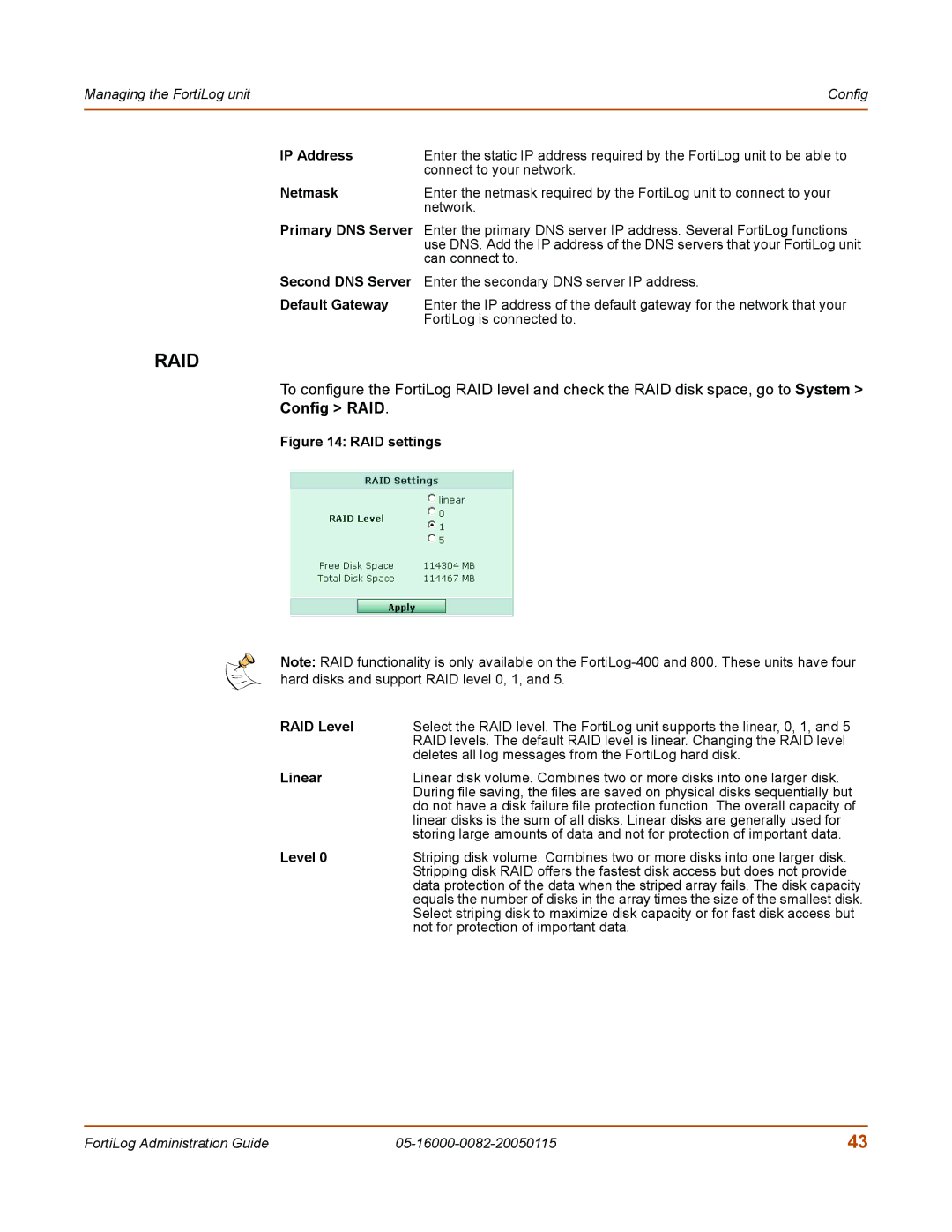
Managing the FortiLog unit | Config |
|
|
IP Address | Enter the static IP address required by the FortiLog unit to be able to |
| connect to your network. |
Netmask | Enter the netmask required by the FortiLog unit to connect to your |
| network. |
Primary DNS Server | Enter the primary DNS server IP address. Several FortiLog functions |
| use DNS. Add the IP address of the DNS servers that your FortiLog unit |
| can connect to. |
Second DNS Server | Enter the secondary DNS server IP address. |
Default Gateway | Enter the IP address of the default gateway for the network that your |
| FortiLog is connected to. |
RAID
To configure the FortiLog RAID level and check the RAID disk space, go to System >
Config > RAID.
Figure 14: RAID settings
Note: RAID functionality is only available on the
RAID Level | Select the RAID level. The FortiLog unit supports the linear, 0, 1, and 5 |
| RAID levels. The default RAID level is linear. Changing the RAID level |
| deletes all log messages from the FortiLog hard disk. |
Linear | Linear disk volume. Combines two or more disks into one larger disk. |
| During file saving, the files are saved on physical disks sequentially but |
| do not have a disk failure file protection function. The overall capacity of |
| linear disks is the sum of all disks. Linear disks are generally used for |
| storing large amounts of data and not for protection of important data. |
Level 0 | Striping disk volume. Combines two or more disks into one larger disk. |
| Stripping disk RAID offers the fastest disk access but does not provide |
| data protection of the data when the striped array fails. The disk capacity |
| equals the number of disks in the array times the size of the smallest disk. |
| Select striping disk to maximize disk capacity or for fast disk access but |
| not for protection of important data. |
FortiLog Administration Guide | 43 |
